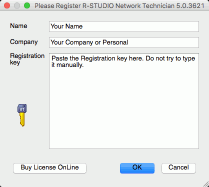- Data Recovery From Apple Disk Images Dmg Files R-studio Windows 10
- Data Recovery From Apple Disk Images Dmg Files Rstudio
- Introduction to R-Studio
- Data Recovery Using R-Studio
- Basic File Recovery
- Advanced Data Recovery
- Mass File Recovery
- Volume Sets and RAIDs
- Nested and Non-Standard RAID Levels
- Reverse RAIDs
- Various Disk and Volume Managers
- Data Recovery over Network
- R-Studio Agent
- Text/hexadecimal Editor
- Technical Information and Troubleshooting
- Working with the Third-Party Hardware
- R-Studio Emergency
- Creating Startup Disks
- R-Studio Emergency Operation
- R-Studio Emergency Technical Information
- R-Studio Agent Emergency
- R-Studio Agent Emergency Hardware Compatibility List
Hi I try to recover files from a crashed Synology Raid5 Volume. It is a 10 Disk 30 TB Volume/Raid5. I took images via Mac/Disk Utility off the 10 disks which are now DMGs automatically split into 3 files each due to size (Disk.dmg, Disk.002.dmgpart,Disk.003.dmgpart). FREE version for Home Users and Lifetime Updates! The new, redesigned R-Undelete wizard-style interface oriented more for beginners in data recovery meets the highest standards in the software development industry and makes the product an easy-to-use yet powerful and fast file undelete solution even for corrupt FAT, exFS, NTFS and ReFS file systems on any local disk it recognizes including HDD. I don’t reinvent the wheel, I just link to it. Changelog; AV/Malware. R-Studio: Data recovery from a non-functional computer. Data Recovery from an Encrypted Linux Disk after a System Crash. Data Recovery from Apple Disk Images (.DMG files) File Recovery after Re-installing Windows. R-Studio: Data Recovery over Network. When the partition structure on a hard disk was changed or damaged. In this case, R-Studio for Mac can scan the hard disk trying to find previously existing partitions and recover files from found partitions. From hard disk with bad sectors. R-Studio for Mac can first copy the entire disk or its part into an image file and then process the.
© 2019 R-Tools Technology Inc.
All rights reserved.
- Apple Disk Images are files (usually with the.DMG extension) which the Mac OS X operating system uses to store disk images, with optional data compression and encryption. Such images can be mounted as volumes to access stored data directly from the operating system.
- Apple Disk Images are files (usually with the.DMG extension) which the Mac OS X operating system uses to store disk images, with optional data compression and encryption.Such images can be mounted as volumes to access stored data directly from the operating system.
To create an image file
| 2 | Press the Alt+D key and select Create Plain Image File or Create Compressed Image File on the Drive menu |
Plain Image | If this option is selected, R-Studio will create a simple exact copy of the object. This image format is compatible with the previous versions of R-Studio . |
Compressed Image | If this option is selected, R-Studio will create an image file compatible with the images created by R-Drive Image , but incompatible with the previous versions of R-Studio . |
| 3 | Specify the output folder and file name on the Create Image File dialog box |
To load an image file
| 1 | Press the Alt+D key and select Open Image File on the Drive menu |
| 2 | Specify the folder and file name with the image on the Open Image File dialog box |
Disk Utility User Guide
You can restore a disk image to a disk. To do this, you first need to erase the disk. If the disk image has multiple partitions, you must restore each partition individually.
Restore a disk image with a single volume to a disk

In the Disk Utility app on your Mac, select the volume that you want to restore in the sidebar, then click the Restore button .
This is the volume that is erased and becomes the exact copy.
Click the Restore pop-up menu, then choose the volume you want to copy.
If you’re restoring from a disk image, click the Image button, then navigate to that disk image.
Click Restore.
Restore a disk image with multiple volumes to a disk
To restore a disk image with multiple volumes to a disk, you must partition the destination disk, then restore each volume individually.
Data Recovery From Apple Disk Images Dmg Files R-studio Windows 10
In the Finder on your Mac, double-click the disk image to open it.
The disk image’s volumes appear as disks in the Finder.
In the Disk Utility app, select the disk in the sidebar, click the Partition button , then partition the destination disk.
The destination disk must have as many partitions as the disk image, and each of the disk’s partitions must be at least as large as the corresponding partition in the disk image. See Partition a physical disk in Disk Utility on Mac.
In the sidebar, select the volume that you want to restore, then click the Restore button .
This is the volume that is erased and becomes the exact copy.
Do one of the following:
Restore from a volume: Click the “Restore from” pop-up menu, then choose the volume you want to copy.
Restore from a disk image: Click Image, choose the disk image you want to copy, then click Open.
Click Restore.
Repeat steps 3–5 for each remaining partition.